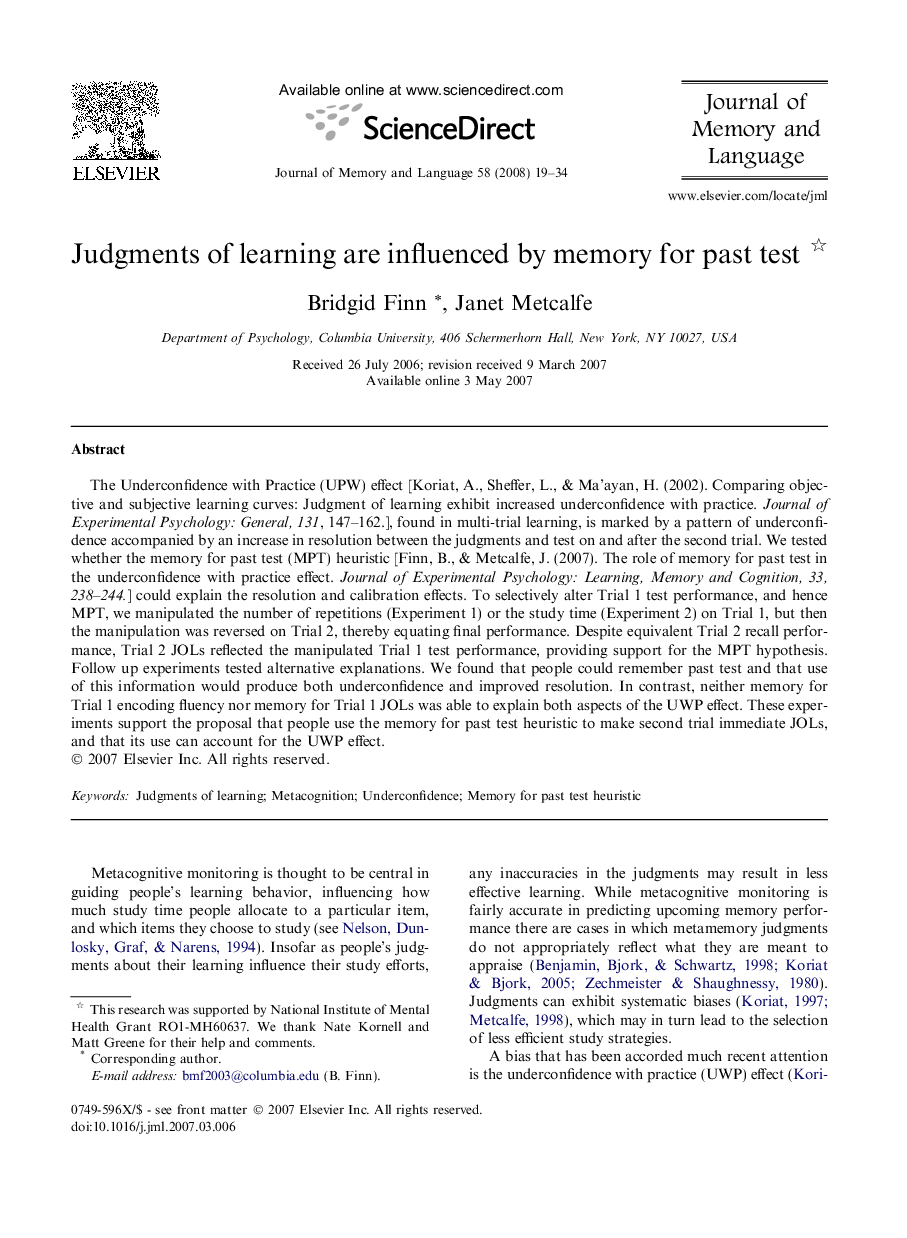| Article ID | Journal | Published Year | Pages | File Type |
|---|---|---|---|---|
| 932156 | Journal of Memory and Language | 2008 | 16 Pages |
The Underconfidence with Practice (UPW) effect [Koriat, A., Sheffer, L., & Ma’ayan, H. (2002). Comparing objective and subjective learning curves: Judgment of learning exhibit increased underconfidence with practice. Journal of Experimental Psychology: General, 131, 147–162.], found in multi-trial learning, is marked by a pattern of underconfidence accompanied by an increase in resolution between the judgments and test on and after the second trial. We tested whether the memory for past test (MPT) heuristic [Finn, B., & Metcalfe, J. (2007). The role of memory for past test in the underconfidence with practice effect. Journal of Experimental Psychology: Learning, Memory and Cognition, 33, 238–244.] could explain the resolution and calibration effects. To selectively alter Trial 1 test performance, and hence MPT, we manipulated the number of repetitions (Experiment 1) or the study time (Experiment 2) on Trial 1, but then the manipulation was reversed on Trial 2, thereby equating final performance. Despite equivalent Trial 2 recall performance, Trial 2 JOLs reflected the manipulated Trial 1 test performance, providing support for the MPT hypothesis. Follow up experiments tested alternative explanations. We found that people could remember past test and that use of this information would produce both underconfidence and improved resolution. In contrast, neither memory for Trial 1 encoding fluency nor memory for Trial 1 JOLs was able to explain both aspects of the UWP effect. These experiments support the proposal that people use the memory for past test heuristic to make second trial immediate JOLs, and that its use can account for the UWP effect.
